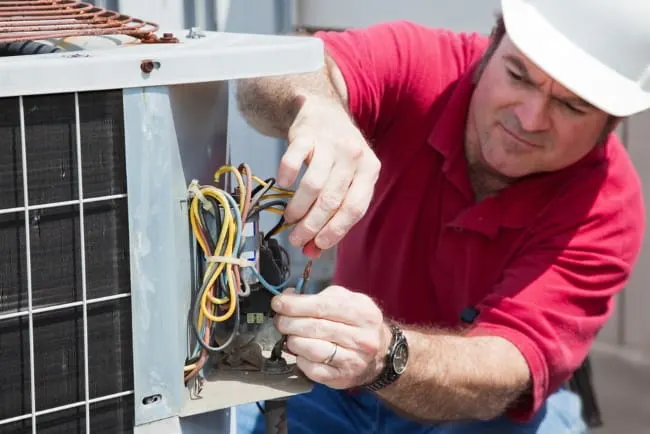
There are several things that homeowners should know, including the subcooling calculation process.
To a homeowner, understanding how to calculate subcooling may seem daunting, but with the right tools and a bit of knowledge, it can be easily done.
This expert guide will walk you through the process step-by-step so that you can understand what’s happening inside your zone HVAC system.
With this knowledge in hand, you’ll be able to make informed decisions about your home’s comfort level and energy efficiency.
For more useful information about subcooling, be sure to check out the following post from the team of HVAC experts at Anderson Air.
What is subcooling and why is it important for HVAC systems?
In HVAC terms, subcooling is the act of cooling a substance below its normal condensation point.
This can be done for a variety of reasons, but the most common reason is to increase the efficiency of a heat exchange system. By subcooling the refrigerant before it enters the evaporator coils, you can ensure that all of the heat from the air being cooled is transferred to the refrigerant. This results in a more efficient system and helps to reduce energy costs.
Additionally, subcooling can help to prevent condensation on the evaporator coils, which can lead to ice build-up and reduced airflow. As a result, subcooling is an important consideration for any HVAC system.
How to calculate subcooling
Subcooling is the difference between the temperature of a saturated liquid and the actual temperature of that liquid. The actual temperature of the liquid is what’s important, not the surrounding air temperature.
In order to calculate subcooling, you’ll need a good thermometer that can measure both the saturated liquid temperature and the actual liquid temperature. If you don’t know how to measure subcooling, start by measuring the saturated liquid temperature. This is the boiling point of the refrigerant you’re using.
Next, measure the actual liquid temperature. The difference between these two numbers is your subcooling.
For example, let’s say you’re using an R-22 refrigerant. The boiling point of R-22 at sea level is -40 degrees Fahrenheit. Let’s say you measured the liquid temperature and it’s -10 degrees Fahrenheit.
That means your subcooling is 30 degrees Fahrenheit. Subcooling is important because it tells you how much heat has been removed from the refrigerant.
The higher the subcooling, the more heat that has been removed. In order to achieve proper cooling, you need to have a high enough subcooling number. Too low of a number means your system isn’t removing enough heat, and too high of a number means your system is removing too much heat.
Subcooling is an important number to keep an eye on when servicing air conditioners and other refrigeration systems. With a little practice, it’ll become second nature to calculate subcooling quickly and accurately.
What factors can affect subcooling and how do you account for them in your calculations?
There are countless factors that can affect subcooling and, as a result, care must be taken to account for them when making calculations.
The first is the type of refrigerant being used. Different refrigerants have different critical points, and therefore will subcool to different temperatures.
The second factor is the pressure of the refrigerant. Higher pressures will result in higher subcooling temperatures, while lower pressures will result in lower temperatures.
Finally, the ambient temperature also plays a role. In general, warmer temperatures will lead to higher subcooling temperatures, while cooler temperatures will lead to lower temperatures. All of these individual variables need to be taken into account when calculating subcooling in order to get accurate results.
Tips for maintaining optimal subcooling in your HVAC system
Once you’ve achieved proper installation of your HVAC system, optimal subcooling is essential to maintaining efficiency and preventing damage. Here are three tips to help you stay on top of it:
- Keep an eye on the temperature of your refrigerant. If the refrigerant gets too warm, it can cause problems with the compressor. Too cold, and it can freeze up the evaporator coils.
- Check the pressures in your system regularly. Too much pressure can cause crashes or leaks, while too little pressure will reduce efficiency.
- Keep the filters clean and free of debris. A clogged filter can restrict airflow and reduce efficiency. Make sure that the filter and the rest of the air conditioner are clean.
By following these simple tips, you can help ensure that your HVAC system runs smoothly and efficiently for years to come.
How to calculate subcooling — Final thoughts from the experts
Now that you understand how to calculate subcooling, it’s important to remember that this step is just one part of the process. You also need to ensure your system is properly sized and has enough refrigerant.
If you don’t know how to check subcooling or simply don’t feel comfortable working with your HVAC system, don’t hesitate to contact an expert today.
A professional HVAC technician can ensure that your equipment is running at its best and keeping your living space comfortable all year long.
- Sagittarius Man & Gemini Woman Love and Sex Compatibility - January 31, 2024
- Taurus Ascendant Rising Personality Traits in Men (Guide) - January 31, 2024
- How to Seduce and Attract a Sagittarius Man (Seduction Tips) - January 31, 2024
